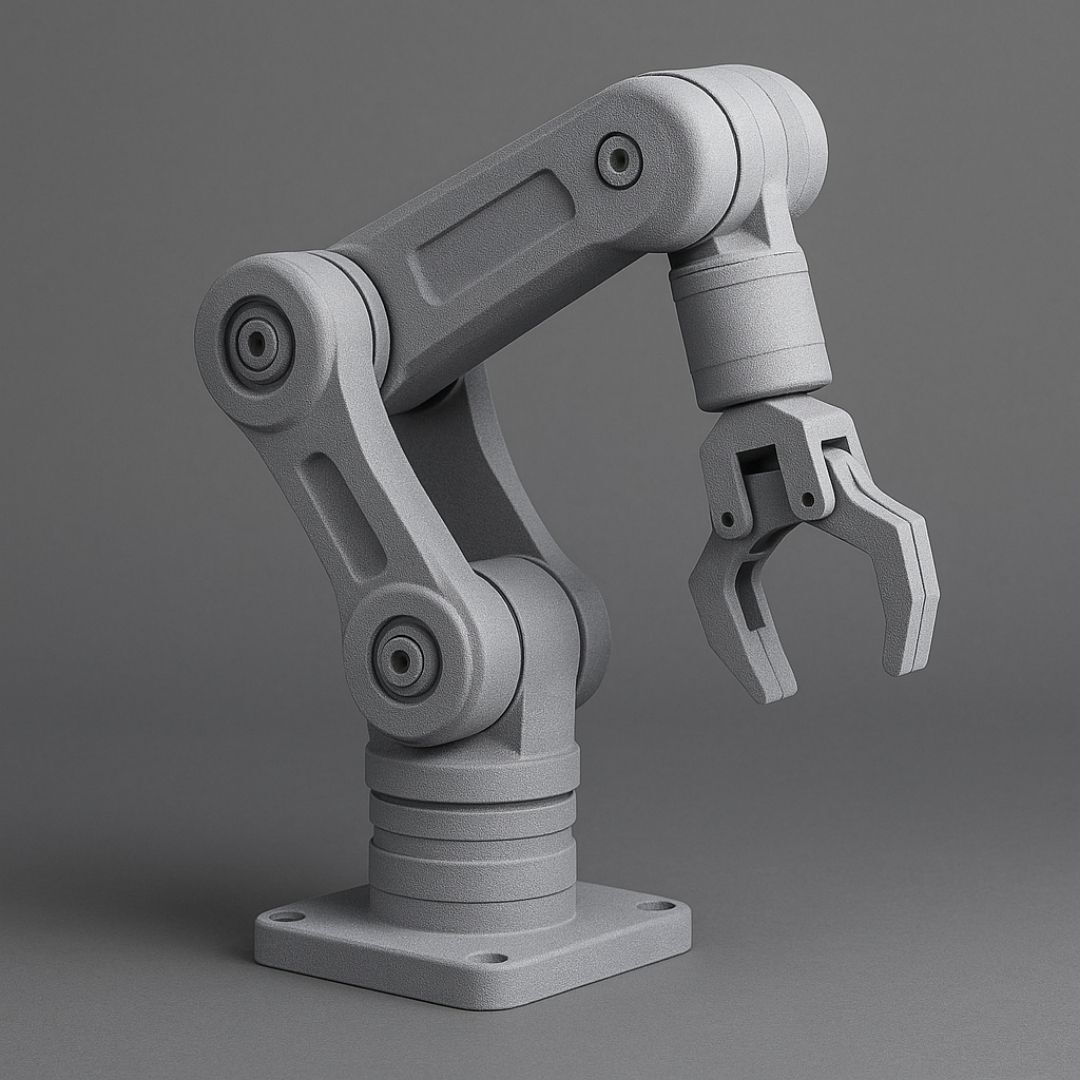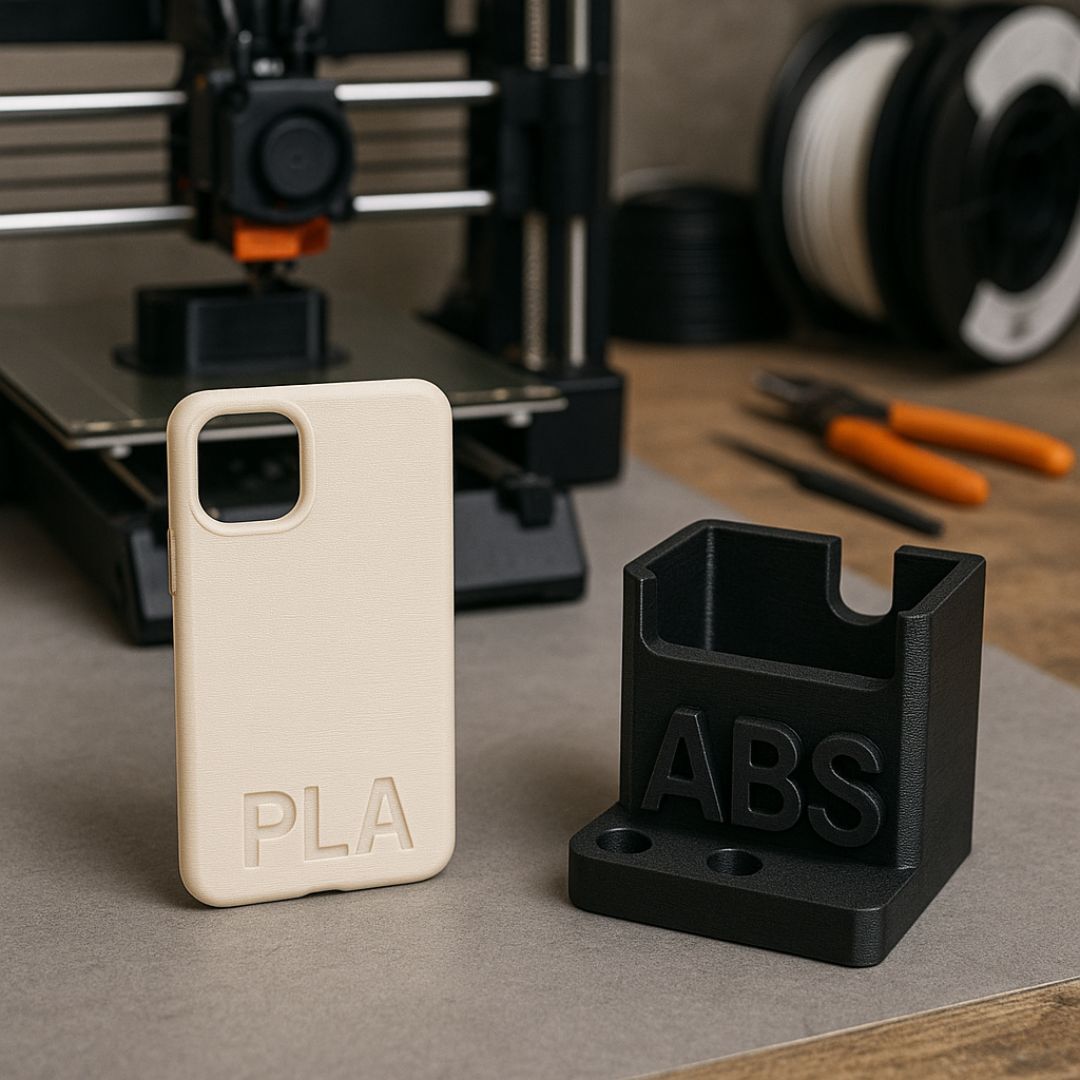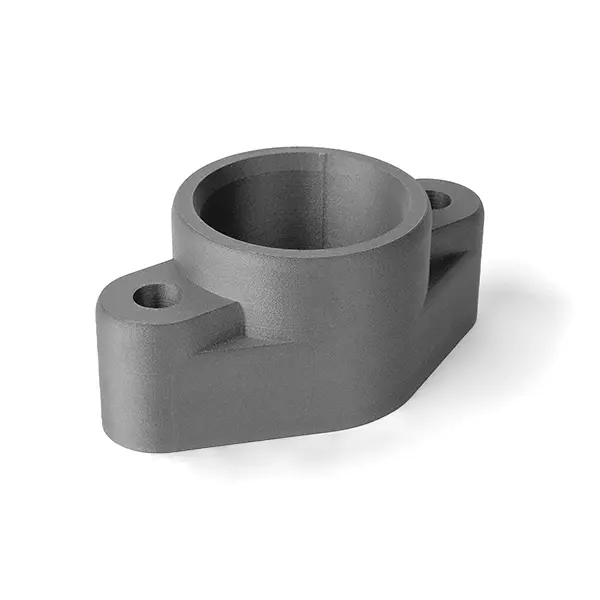2 min read
PLA vs ABS: Technical Comparison Between FDM 3D Printing Materials
In the world of FDM (Fused Deposition Modelling) 3D printing, material selection is a key factor in determining the quality, functionality, and...
4 min read
![]() Weerg staff
:
May 22, 2025
Weerg staff
:
May 22, 2025

In the contemporary technological landscape, the meeting of 3D printing and robotics represents one of the most promising pairings for industry, research and design. 3D printing, or additive manufacturing, enables the rapid and precise creation of components, while robotics requires lightweight, customized and often complex structures. The integration of these two technologies has opened up new possibilities for the production of functional, inexpensive, and customized robots.
The term "3D printed robots" refers to robotic systems, or parts thereof, made using 3D printing technologies. This can include frames, support structures, housings, articulated joints and, in some cases, even flexible or movable elements. Materials used range from PA12 nylon, TPU (elastomer), to technical polymers such as PEEK or carbon-fiber filled materials.
With these capabilities, companies, start-ups and research centers can make highly customised robots, rapidly prototype and test iterations in record time, with low cost.
A concrete and highly relevant example in the area of 3D printed robots comes from the University of California, Berkeley. The research team recently unveiled the Berkeley Humanoid Lite, an open-source humanoid robot designed to be affordable, accessible, and highly customisable. This platform represents a significant step forward in the democratisation of advanced robotics, making a sophisticated robot available at a cost of less than $5,000.
The Berkeley Humanoid Lite is a 0.8-meter-tall robot weighing about 16 kilograms, built largely by 3D printing. The robot's modular design allows for quick and easy production, making it ideal for educational institutions, research centers and independent developers. The robot's structure includes numerous 3D-printed components, such as cycloidal gears, which enable smoother and more efficient motion control while reducing complexity and manufacturing costs.
A distinctive feature of this project is its open-source approach: all CAD files, wiring diagrams, firmware, and technical documentation are freely available through the project's official website. This allows anyone to replicate, modify or improve the robot, facilitating global collaboration among enthusiasts, students and researchers.
Functionally, the Berkeley Humanoid Lite features an advanced control system based on reinforcement learning. This allows control policies to be developed in simulation and transferred directly to the physical robot, drastically reducing the gap between the virtual environment and the real world. Thanks to this integration of 3D printed hardware and advanced control software, the robot is able to perform complex tasks such as walking, manipulating objects, unpacking packages, writing, and even solving Rubik's cube.
The entire project represents a perfect synthesis of technological innovation, accessibility and collaboration. The use of 3D printing has not only broken down the economic barriers to access humanoid robotics, but also enabled an iterative approach to design, where each element can be easily modified, printed, and tested in a short time frame. The Berkeley Humanoid Lite is not just a robot: it is a model of how additive manufacturing can enable open and inclusive innovation in robotics.

1. Rapid prototyping and fast iteration
With 3D printing, it is possible to go from digital model to physical part in a matter of days, dramatically reducing the time it takes to test an idea. This is critical in robot development, where each component must be tested against functional and strength criteria.
2. Extreme customisation
Each robot can be custom-designed for the specific application: dimensions, geometries, mounts, attachment systems. 3D printing thus eliminates the limitations imposed by traditional manufacturing processes.
3. Weight reduction
By using lightweight materials and topological optimization techniques, it is possible to make strong but much lighter structures than those obtained by conventional methods. This is especially important for mobile or airborne robots.
4. Integration of functions
Additive manufacturing makes it possible to design and produce multifunctional components by integrating, for example, wiring guides, electronic housings and joints into a single print. This reduces the number of parts, assembly time and the possibility of error.
5. Affordable costs even for small batches
3D printing is cost-effective for small volumes or single specimens. This is perfectly suited to the production of prototypes or custom robots for specific tasks.
Customised industrial robots
In the world of industrial automation, 3D printing allows robots to be tailored to the specific needs of a production line. Frames, articulated arms, gripper systems, and protective casings can be tailored to operate in confined environments, non-standard geometries, or special operating conditions.
Robots for research
Robotics and bioengineering laboratories take advantage of 3D printing to create exoskeletons, bio-inspired robots, and wearable devices. The ability to combine rigid and flexible materials makes it possible to simulate the behavior of muscles, tendons and joints.
Robots for logistics
With the growth of automation in warehousing and delivery, small autonomous mobile robots are becoming increasingly common. 3D printing makes it possible to create lightweight, customized enclosures that can be adapted to sensors and specific transportation needs.
PA12 (Nylon): Excellent ratio of mechanical strength, stiffness and light weight. Perfect for structural components.
PA12 GF/CF: Reinforced with glass or carbon fiber, increases stiffness and strength while keeping weight down.
TPU: Flexible elastomer, useful for making bearings, flexible joints or cushioned surfaces.
PEEK: High-performance polymer, resistant to high temperatures, perfect for critical industrial environments.
Medical ABS: Used for wearable devices and robotic prosthetics because of its biocompatibility and dimensional stability.

Weerg offers a high-precision industrial 3D printing service, perfect for the production of functional robots, prototypes and small series. Using Multi Jet Fusion (MJF), FDM and MSLA technologies, parts with optimal mechanical properties, smooth surfaces and precise details can be achieved.
Fast delivery (even in as little as 48 hours), combined with a choice of dozens of technical materials, makes Weerg the ideal partner for engineers, designers and companies active in the robotics industry.
In addition, the instant online quotation system and the technical support offered by our specialists makes it possible to go from idea to printed prototype in just a few clicks.
3D printing is revolutionising robot design and manufacturing. From prototyping to small series production, this technology enables creative freedom, speed, and cost optimization. Thanks to suppliers like Weerg, even small- to medium-sized businesses can access professional tools and make custom robots from high-quality materials. Whether in research, education, industry or logistics, 3D printed robots represent the future of intelligent automation.

2 min read
In the world of FDM (Fused Deposition Modelling) 3D printing, material selection is a key factor in determining the quality, functionality, and...

1 min read
Weerg, a global reference in additive manufacturing and online CNC machining, collaborates with CT Pack, an Italian leader in the design and...

2 min read
Starting today, Weerg expands its range of FDM 3D printing materials with the introduction of PPS CF (carbon fiber-reinforced polyphenylene sulfide),...